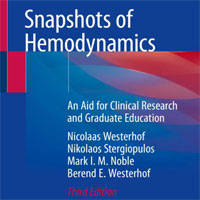Tag: research
Moving On as an ICU Family After the Death of a Respected Leader
Paul Young is an intensive care specialist at Wellington Hospital in New Zealand where he is the co-clinical leader at Wellington ICU. He is also medical director of Wakefield Hospital ICU, Deputy Director at the Medical... read more
Contemporary Management of Cardiogenic Shock
Cardiogenic shock (CS) is a multifactorial and hemodynamically diverse high-acuity illness that is frequently associated with multisystem organ failure. The complexity of CS requires a widespread application of best-care... read more
Neurally adjusted ventilatory assist decreases work of breathing during non-invasive ventilation in infants with severe bronchiolitis
In this physiological study, we report an improvement of respiratory unloading by adding a second level of pressure with NAVA in infants with severe bronchiolitis. WOB decreased immediately after switching to NAVA, as reported... read more
The EXACT Protocol
The EXACT protocol: a multi-centre, single-blind, randomised, parallel-group, controlled trial to determine whether early oxygen titration improves survival to hospital discharge in adult OHCA patients. This study will determine... read more
Mortality and Cardiovascular and Respiratory Morbidity in Individuals with Impaired FEV1 (PURE)
The associations between the extent of forced expiratory volume in 1 s (FEV1) impairment and mortality, incident cardiovascular disease, and respiratory hospitalisations are unclear, and how these associations might vary... read more
Use of the Confusion Assessment Method in Multi-center Delirium Trials
Delirium occurs commonly in older adults and is associated with adverse outcomes. Multi-center clinical trials evaluating interventions to prevent delirium are needed. The Confusion Assessment Method (CAM) is a validated... read more
The Evolution of Lung Protective Ventilation in ARDS
Dr. Jesus Villar is Group Chief of the Center for Biomedical Research in Respiratory Diseases in Madrid and Senior Scientist of the Research Unit at the Hospital Universitario Dr. Negrin in Las Palmas, Spain. He is the Coordinator... read more
Evidence Backs Giving Probiotics with Antibiotics
So much of what we're told to do calls for sweeping practice changes or titanic additions to our routine approach. My own articles have advocated for tremendous shifts in typical techniques, and one need not look far to find... read more
Low Hand Hygiene Compliance in ICUs
Healthcare workers in intensive care units (ICUs) are regularly missing opportunities to clean their hands during the care of patients, despite its critical importance for infection control, according to new research being... read more
Research Ethics and Informed Consent in Critical Care
Research studies in critically ill populations pose many unique regulatory and ethical challenges that have implications for study design and execution. The life-threatening nature of conditions being studied and the urgency... read more
Ascorbic Acid, Corticosteroids, and Thiamine in Sepsis
The combination of thiamine, ascorbic acid, and corticosteroids is a promising new therapy for sepsis resuscitation but currently lacks robust evidence to support its widespread use. The potential effectiveness of this medication... read more
Occupational Therapy for Delirium Management in Elderly Patients without Mechanical Ventilation in an ICU
Delirium has negative consequences such as increased mortality, hospital expenses and decreased cognitive and functional status. This research aims to determine the impact of occupational therapy intervention in duration,... read more
Snapshots of Hemodynamics: An Aid for Clinical Research and Graduate Education
This new edition reviews recent developments in genetics and molecular biology and new noninvasive measurement techniques that have enabled vast improvements in the measurement and understanding of cardiovascular hemodynamics.... read more

The Importance of Skeletal Muscle Ultrasound in Critical Care
With growing interest in understanding muscle atrophy and function in critically ill patients and survivors, ultrasound is emerging as a potentially powerful tool for skeletal muscle quantification. However, there are key... read more
Prolonged acute and post-acute care recovery of physical function in survivors of acute respiratory failure
The proportion of survivors of acute respiratory failure is growing; yet, many do not regain full function and require prolonged admission in an acute or post-acute care facility. Patients who require prolonged admission... read more
Management of Refractory Vasodilatory Shock
Refractory shock is a lethal manifestation of cardiovascular failure defined by an inadequate hemodynamic response to high doses of vasopressor medications. Approximately 7% of critically ill patients will develop refractory... read more
Left ventricular systolic function evaluated by strain echocardiography and relationship with mortality in patients with severe sepsis or septic shock
Worse global longitudinal strain (GLS) (less negative) values are associated with higher mortality in patients with severe sepsis or septic shock, while such association is not valid for left ventricular ejection fraction... read more
Letting the Patient Decide: A Case Report of Self-Administered Sedation During Mechanical Ventilation
It is common for critical care nurses to administer sedative medications to patients receiving mechanical ventilation. Although patient-controlled analgesia is frequently used in practice to promote effective self-management... read more
Tele-ICU Leads to Overall Reduction in ICU Mortality
A new systematic review and meta-analysis has found that implementation of tele-ICU services was associated with an overall reduction in ICU mortality. Furthermore, in subgroup analysis, the pooled odds ratio for ICU mortality... read more
Expanding the Differential for Hypotension in the Pediatric Patient
As many ED practitioners are aware, food allergies are common in the first 2 years of life, with a prevalence cited between 1-10% of the population. Most food allergies are IgE-mediated hypersensitivity reactions. Food protein-induced... read more
A Non-Antibiotic Approach for Treating or Preventing Sepsis
Researchers at the Royal College of Surgeons in Ireland (RCSI) have tested a compound called cilengitide in a preclinical trial. The drug goes by the brand name InnovoSep. Researchers discover the drug has the potential to... read more
ICU Survivors Have a Substantial Higher Risk of Developing New Chronic Conditions Compared to a Population-Based Control Group
ICU patients have more chronic conditions during the year before ICU admission compared with a population-based control group and a five times higher odds on developing one or more new chronic conditions compared with the... read more









